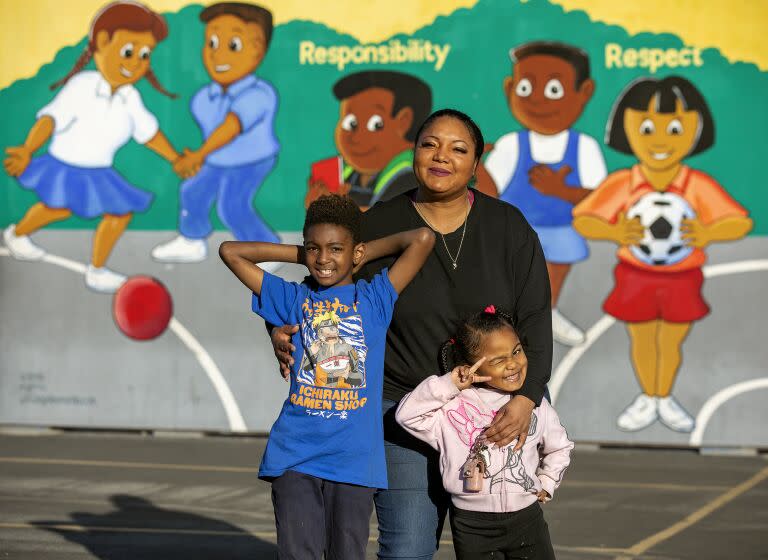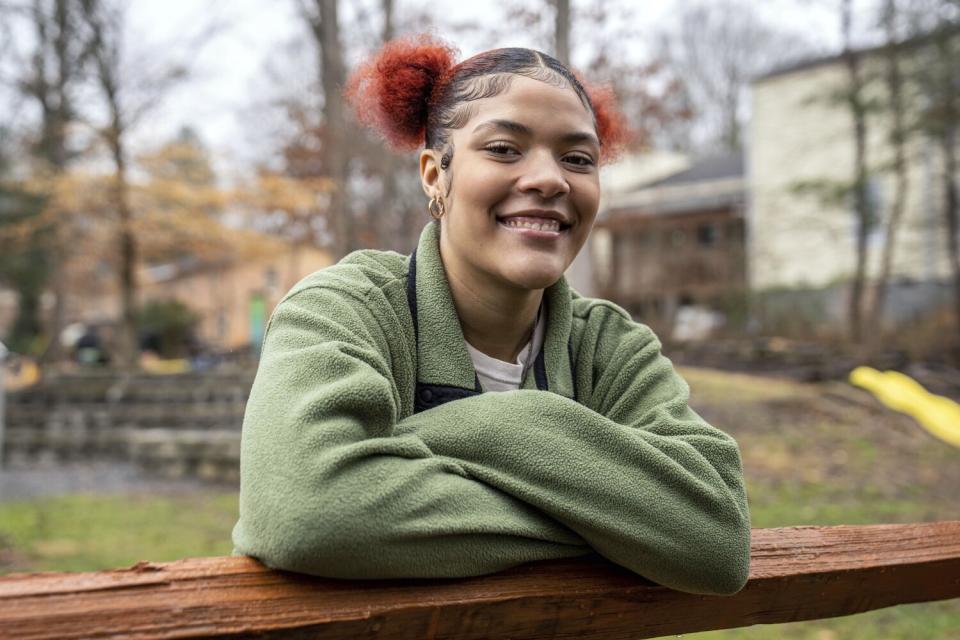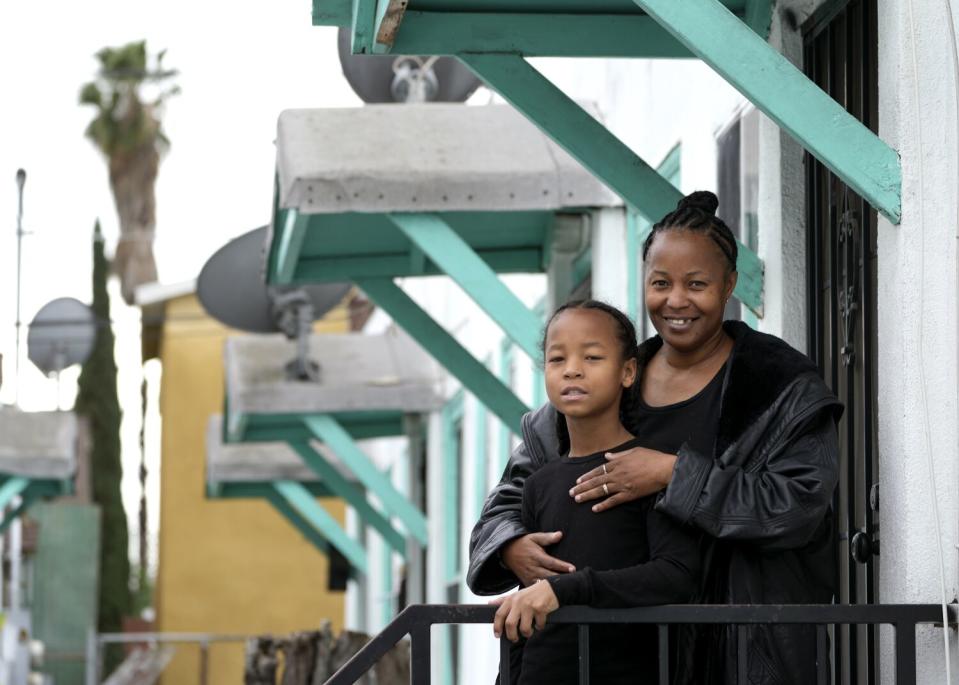About 152,000 California school-age children unaccounted for, research shows

For the record:
10:36 a.m. Feb. 10, 2023: An earlier version of this article said the estimated number of missing school-age children in all states with such data was 240,000. Because of an update in Colorado enrollment figures, the figure has been corrected to 234,000.
An estimated 152,000 school-age children expected to be in California classrooms are unaccounted for in the wake of the COVID-19 pandemic, according to new research, an indication of the lingering disruption affecting students, their families and schools.
In all, the analysis tallied 234,000 unaccounted-for public school students in 21 states and the District of Columbia, with the greatest number in California, the nation's most populous state. Data were not available for 29 states in research conducted by the Associated Press, Stanford University’s Big Local News project and Stanford education professor Thomas Dee.
California officials had previously reported enrollment declines — more than 110,000 last year and about 160,000 the previous year, much of that driven by families not wanting to put kindergartners into online learning after campuses closed because of the pandemic.
The new research focuses on the totality of enrollment drops during the pandemic years and attempts to determine what happened to these students to the extent possible, bringing in data from private school enrollment and also figures for students being home-schooled.
A rise in home-schooling and private-school enrollment did not come close to accounting for all the students who did not turn up at public schools, the analysis showed.
"Public school enrollment fell dramatically during the first two school years of the COVID-19 pandemic, with losses concentrated among the youngest students," wrote Dee about the national picture in an essay accompanying the research. Increased home-school enrollment and population loss each explain about one-fourth of the decline, with an increase in private school enrollment accounting for substantially less, "leaving more than one-third of the decline unexplained."
In California, about 56% of the enrollment decline of about 271,000 students across three school years cannot be explained alone by shrinking birth rates combined with more students in home-schooling and private schools.
The study looked at enrollment in 2019-20, 2020-21 and 2021-22. The pandemic closed campuses starting in March 2020. Virtually all campuses were reopened by the fall of 2021-22 academic year.
During that period, California's school-age population dropped about 96,000, according to Census data, while the number of home-schoolers increased by 14,000 and private school enrollment grew by 9,500. This accounts for 119,500 students of the total decline of 271,000. That leaves about 152,000 students unaccounted for.
"The findings are sound and eye-popping," said UC Berkeley education professor Bruce Fuller, who emphasized that a high number of young students were kept out of school, especially public school. He said he hopes enrollment figures will show a rebound when data are released for the current school year.
One major limitation of the analysis is that a student would fall into the tally of the missing if that student moved to another country or to a state, such as New Jersey or Illinois, that did not provide the necessary data. In California, families are known to have left for neighboring Nevada and Arizona, and the Texas cities of Dallas and San Antonio — for which data were not available. Mexico is also a destination for some families.
State Board of Education President Linda Darling-Hammond said that displacement and relocation during the pandemic likely affected the numbers and that a more complete national look is needed.
"Many people moved during the pandemic to be with extended family or to escape high housing prices," Darling-Hammond said. "For those who could work remotely, some have kept their original jobs. Since there were labor shortages, others were able to get jobs in new places more easily."
A spokeswoman for the California Department of Education said, in a statement, that her agency "appreciates the purpose of the study."
"However, the methodology and data used does not present a complete picture," said Maria Clayton. She noted that students who move "are often not reported to the state." Private schools are responsible for reporting their own enrollment figures, which are not audited for accuracy, she added, and home-schooling families have a "self-reported affidavit process."
"California is doing more than any other state to get kids back into the classroom and mitigate any learning loss that occurred due to the pandemic — including building a universal transitional kindergarten program, providing free school meals and funding school mental health initiatives, Clayton said.
Dee, the Stanford researcher, offered theories on what happened to students — buttressed by anecdotal reporting from the Associated Press. Many students just stopped going to school, Dee suggested. Others learned in unregistered home-schooling situations and increasing numbers skipped kindergarten, especially when it took place via remote learning. The latter appeared especially true in states where kindergarten is an optional grade, such as California.
The report profiled Kailani Taylor-Cribb who, in the normal course of schooling would be a senior, preparing for graduation in a few months.
Instead, Kailani hasn’t taken a single class in what used to be her high school since the height of the coronavirus pandemic. She vanished from the public school roll in Cambridge, Mass., in 2021 and has been, from an administrative standpoint, unaccounted for since then.

Even before the pandemic, Kailani, then in ninth grade, had begun to feel alienated at her school. She had been moved to a different math class because of poor grades.
Ironically, the pandemic and at-home education relieved the anxiety Kailani felt from being in the school building. Kailani preferred online school because she could turn off her camera and engage as she chose. Her grades improved.
But when the campus reopened, she never returned. She went to work at Chipotle, ringing up orders in Boston’s financial district. She eventually passed high school equivalency exams after moving to North Carolina.
“We want to say it’s outside stuff” that’s keeping kids from returning to school, such as caring for younger siblings or the need to work, said Sonja Santelises, chief executive of Baltimore's public schools. But a common deciding factor for students falling out of school may be the lack of caring adults who can discuss their concerns about life.
“That’s really scary,” Santelises said.
Los Angeles Unified School District Supt. Alberto Carvalho has spoken frequently of the urgency of finding missing students. In July, he estimated there to be about 20,000 in areas served by L.A. Unified, the nation's second-largest school system. That estimate would equate to nearly 1 in 20 students, a number that triggered shock waves of reaction and some disbelief.
A related issue is those students who are enrolled but are either chronically absent or not attending school at all for lengthy periods. These students are unlikely to be counted among the state's 152,000 missing, but can face similar challenges.
In Los Angeles last year, nearly half of students were chronically absent, meaning they missed 10% or more of the school year. For students with disabilities, the numbers were even higher: According to district data, 55% missed at least 18 school days.
Last week, the district launched its third student retrieval day since the start of the school year, this time focusing on facilities that provide shelter to homeless families. Chronic absenteeism has declined in the district, but not to pre-pandemic levels.
Critics say the L.A. Unified effort has been uneven at best, especially for students with special needs.
The education of L.A. student Ezekiel West, 10, was upended during the pandemic. At various points, Ezekiel — who reads at a first-grade level — numbered among those not in school, although he may not have been counted as missing if his name remained on a roll sheet.

Before the pandemic shutdowns, he was shuffled from school to school when educators failed to address his impulsive behavior, according to the family. During online learning, his mother couldn’t get home internet and struggled with the Wi-Fi hotspots provided by the school. She worked as a home health aide and couldn’t monitor Ezekiel online.
When he returned to campus in fall 2021 as a third-grader, he was frustrated that his classmates had made more progress.
“I did not feel prepared,” he said in a recent phone interview with the Associated Press. “I couldn’t really learn as fast as the other kids, and that kind of made me upset.”
An administrative judge ruled that L.A. Unified had violated Ezekiel’s rights and ordered the district to give him a spot at a new school, with a special plan to ease him into learning and trusting teachers. The school didn’t follow the plan, according to his attorney, so his mother, Miesha Clarke, stopped sending him in October.
District officials did not respond to requests from the Associated Press for comment on Ezekiel’s case.
The family is exploring education options.
Their attorney, Allison Hertog, said she has represented at least three L.A. Unified students who have been out of school unnecessarily for long periods because the school system did not respond to their needs.
"Over months of reporting, the AP learned of students and families avoiding school for a range of reasons," reporters Bianca Vázquez Toness and Sharon Lurye wrote. "Some are still afraid of COVID-19, are homeless or have left the country. Some students couldn’t study online and found jobs instead. Some slid into depression."
While the research sounds an alarm about a lack of urgency to address the issue, many families have been helped by educators trying to make a difference.
Antoinnyca Daniels lost a place to live due to a dispute over a family property. For months, she moved from place to place, sometimes living out of her car.
Compton Avenue Elementary Principal Lashon Sanford learned of the family's plight and helped arrange for Daniels to get a room at a family crisis center — until she can make other arrangements.
The principal "immediately assisted us with help," Daniels said. "By having people take us to the housing places to apply ... by going with me."
With her own determination and that of the school, her son never missed a day of school.
Associated Press reporters Bianca Vázquez Toness and Sharon Lurye contributed to this report.
This story originally appeared in Los Angeles Times.

